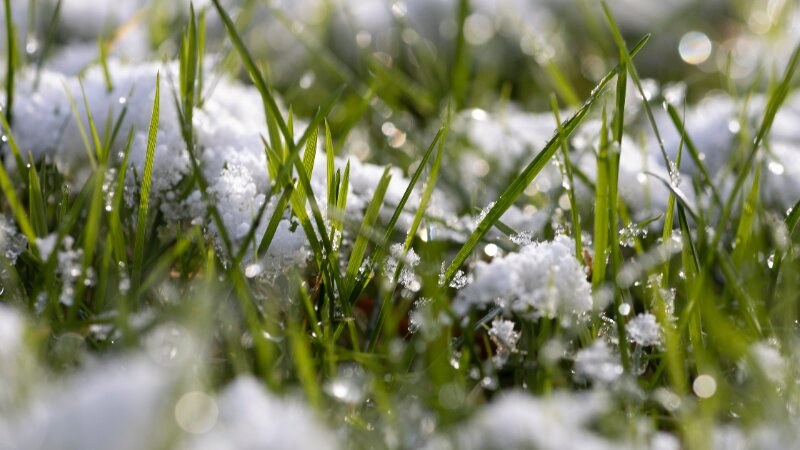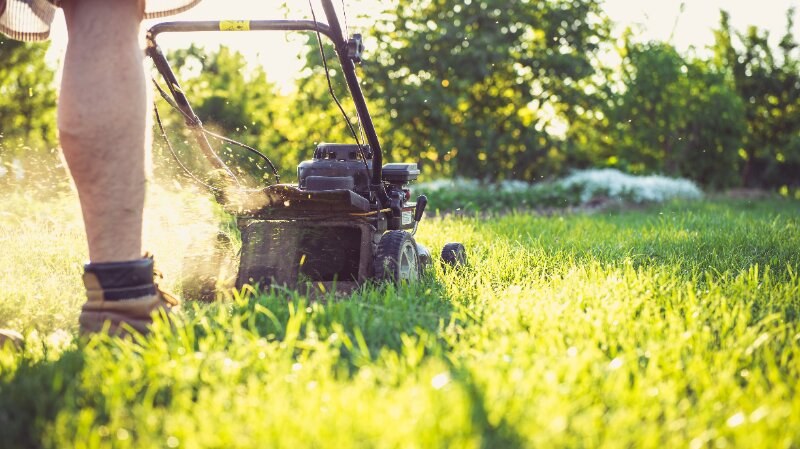Mowing Your Lawn in the Winter: Is It Necessary?
Reading time: 7 minutesBy mid-December, Western Canada is typically blanketed in a few inches of snow. For property owners with lush green lawns, winters generally mean sitting the frigid temperatures out.
The colder months bring their own set of challenges, and understanding whether mowing is necessary during this time can make a significant difference in preserving your lawn's vitality come spring.
A common query we get? Should you mow your lawn in the winter?

Is Mowing Necessary During Winter?
The simple answer is no. You do not have to mow your lawn in the winter. So when is the right time? When do you stop mowing your lawn?
Fall is the ultimate perfect season to prep your lawn for the struggles of the winter wave. When the weather begins to bathe in the warm, familiar glow of amber hues, and the wind starts to get a little chilly, that’s the last time to pick up your garden equipment or schedule a lawn maintenance service.
Once Mother Nature bestows its first frost, you should stop mowing the lawn until the weather starts to warm. Mowing in winter can damage your turf. Grass tends to undergo a period of dormancy during winter, meaning you need to let it rest until spring.
Depending on the temperature, the grass on your lawn typically stops growing from late October to early November. This means there is no need to mow it during this time, even without snow. Mowing the grass too short could lead to more damage when it eventually snows.
Tips to Mow Before Winter in The Fall
Here are some tips to ensure your home turf gets the best treatment with the least damage.
Plan a Clean-Up Before You Start
A fall clean-up is an essential step. Make sure to get rid of the excess mulch and debris, so you have a clean canvas to begin with. Fall leaves covering the grass is a massive struggle for your yard as it makes it difficult for the turf to absorb sunlight and vital nutrients. This ultimately leads to a lack of aeration.
Make Sure There’s No Moisture
Mowing with moisture on the grass from snow or any kind of water buildup will cause damage. First, it can damage the roots; secondly, the weight from the water can make the grass wilt, leading to an uneven cut. A dry lawn is optimal for a perfect mow.
Mow To The Perfect Length
Mowing is an art. The perfect length differs from season to season. Since we all know that your yard will be dormant during winter, you should leave the grass blades a little taller than you would during spring or summer.
The optimal length of grass blades during winter is 2.5 to 3 inches. Another way to measure the cut is by chopping off one-third of the length of your grass. Taller grass is susceptible to snow mould because it captures moisture, while shorter grass blade lengths could make the yard vulnerable to the harshness of the climate.
Layer Some Mulch
Make sure you leave some mulch on the ground to protect the grass from freezing temperatures. Although too much debris harms your turf, you can leave a thin layer of mulch to protect the deep roots from frost. This ensures that the grass will return to its original state come spring.
Fertilize The Soil For Dormancy
Applying a layer of fertilizer on the lawn in early fall is important. The right time to do so is typically between mid-August to mid-September. This prepares your home turf for its dormant period when extreme cold hits. Nitrogen and potassium nourish the soil well enough to heal the damage caused during the growth period.
Aerate the Surface of the Lawn
Aerating your lawn is an extremely crucial step to ensure the nourishment reaches deep inside the roots of the grass. Using appropriate equipment, you need to make small holes in the soil. This allows water, air, sunlight, and all the essential nutrients to reach the roots.
Add A Layer Of Seeds
Nothing is more of a turn-off than a patchy, uneven lawn. A top layer of seeds can fix the damaged patches in your home garden. This topcoat of seeds enhances the nutritional value of the soil and makes it ready for the blooming season. Make sure not to overseed as it will congest that area of the soil, negating the purpose.
Put The Lawn Equipment Inside
The thawing snow can ruin your lawn maintenance equipment when the weather starts to warm up. Make sure to keep all your tools inside or under a shed to protect them from the changing weather. In addition, remember to clean all your tools and equipment before storing them inside for winter to prevent mould.

FAQs Related to Mowing and Lawn Care
When is the right time to stop mowing?
As a homeowner, you must focus on one rule: if it doesn’t grow, don’t mow. The grass is likely to undergo a dormant stage during winter. You need to pay attention to the temperature of your region while keeping an eye on the growth rate. It’s usually when the temperature falls below 7 degrees.
Why is the last cut of the year so crucial?
Mowing the lawn to the right length encourages better health and growth of your turf. Shorter grass prevents diseases by not accumulating much snow during winter, as it is easier to clean. This decreases the risk of snow mould.
What is the optimal grass length for winter?
During winter, the grass is dormant. Therefore, it’s important to leave at least two-thirds (2.5–3 inches) of grass blades over the surface to help your yard withstand the harshness of the weather. This protects the roots so they can flourish when spring kicks in.
To ensure you get an even cut, consult a professional lawn-cutting service like Green Drop for more polished results.
What damages the grass during winter?
The last thing you want is damaged, patchy grass. After a heavy frost, make sure not to walk on the grass as it can harm the blades. Walking on snowy grass is equivalent to running a two-ton cement roller over it. Go easy on your home turf during its dormant period.
What causes snow mold and how to prevent it?
Snow mold or snow rot is a fungal plant disease that occurs when snow or wet leaves remain stagnant on the lawn for too long. It can be recognized by a pinkish-grey colour and circular patches that do not exceed a 12-inch diameter limit.
Although the fungus is active during winter, the damage is much more visible during spring when the snow melts. To prevent snow mold, schedule lawn maintenance before winter. The grass must be mowed to an optimal length because tall grass blades are much more prone to mold.
If you do notice significant damage to your turf, don’t worry; it’s not a lost cause. It’s nothing professional lawn care services can’t fix.
What are the benefits of mowing regularly?
Besides being a therapeutic process for most adults who have an interest in nature, here are some of the top benefits of mowing your lawn regularly:
· You observe better growth
· You get stronger grass
· The roots are deeply nourished
· You get rid of pests and other nuisances
What measures can you take to keep the lawn nourished during the dormant stage?
The perfect time to plan a lawn fertilizer schedule is when winter is just around the corner. Make sure that the schedule doesn’t shift much toward the end of the year. Planning it just before the middle of the fall for the best results is better.
The best lawn fertilizer is any potassium and nitrogen-rich fertilizer that deeply nourishes and conditions the grass.

Let Us Help You Do it the Right Way
Don’t be overwhelmed by all the work. At Green Drop, our experts are always at your service. Leave all the hassle of lawn care before and after winters to us.
Get a free estimate. Our team of professional GreenKeepers are at your service.
You don’t need much lawn maintenance to prepare your lawn for winter. A little goes a long way. Just ensure you follow the guidelines above, and you’ll be all set for the season.

